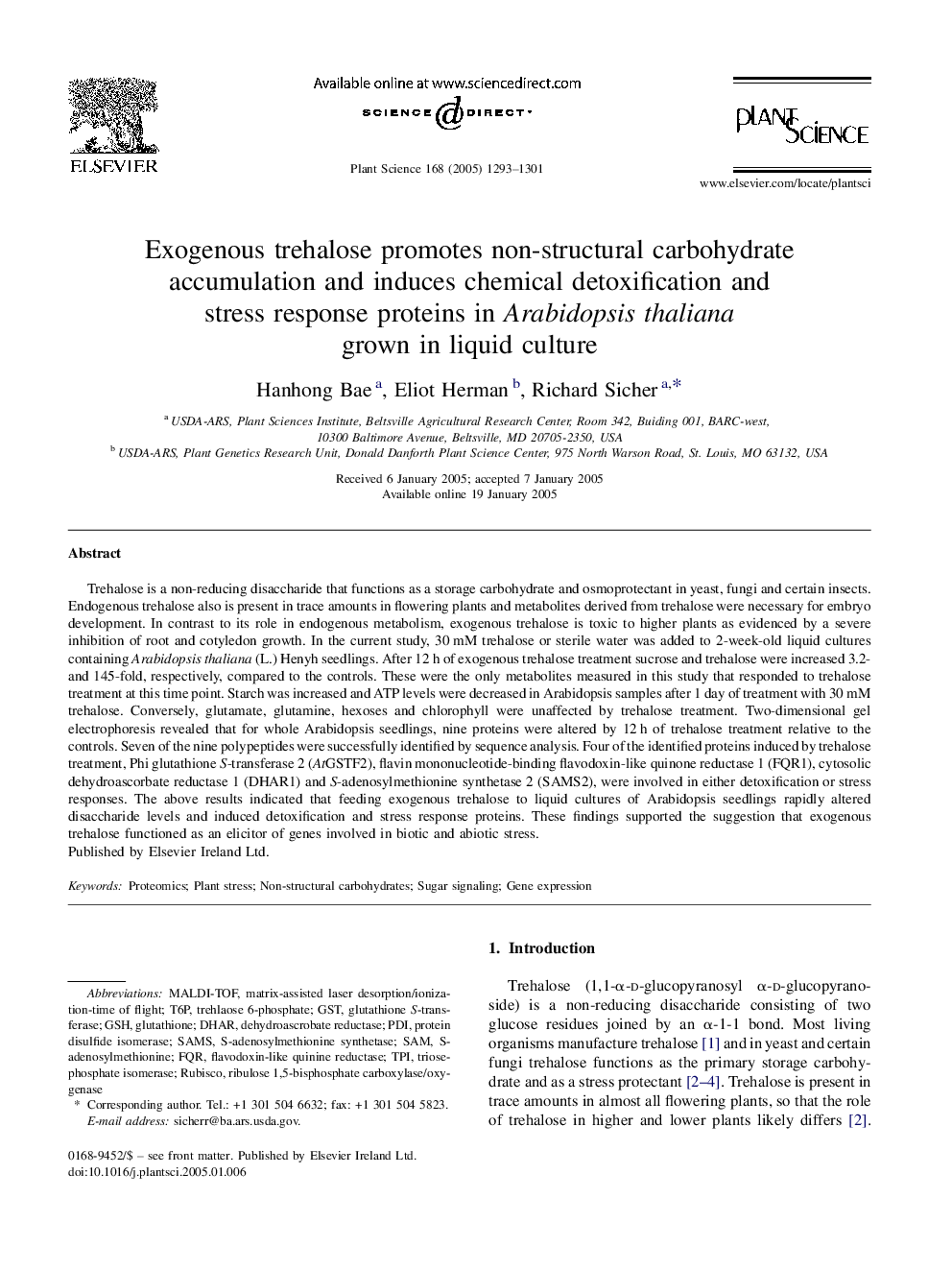| Article ID | Journal | Published Year | Pages | File Type |
|---|---|---|---|---|
| 10840883 | Plant Science | 2005 | 9 Pages |
Abstract
Trehalose is a non-reducing disaccharide that functions as a storage carbohydrate and osmoprotectant in yeast, fungi and certain insects. Endogenous trehalose also is present in trace amounts in flowering plants and metabolites derived from trehalose were necessary for embryo development. In contrast to its role in endogenous metabolism, exogenous trehalose is toxic to higher plants as evidenced by a severe inhibition of root and cotyledon growth. In the current study, 30Â mM trehalose or sterile water was added to 2-week-old liquid cultures containing Arabidopsis thaliana (L.) Henyh seedlings. After 12Â h of exogenous trehalose treatment sucrose and trehalose were increased 3.2- and 145-fold, respectively, compared to the controls. These were the only metabolites measured in this study that responded to trehalose treatment at this time point. Starch was increased and ATP levels were decreased in Arabidopsis samples after 1 day of treatment with 30Â mM trehalose. Conversely, glutamate, glutamine, hexoses and chlorophyll were unaffected by trehalose treatment. Two-dimensional gel electrophoresis revealed that for whole Arabidopsis seedlings, nine proteins were altered by 12Â h of trehalose treatment relative to the controls. Seven of the nine polypeptides were successfully identified by sequence analysis. Four of the identified proteins induced by trehalose treatment, Phi glutathione S-transferase 2 (AtGSTF2), flavin mononucleotide-binding flavodoxin-like quinone reductase 1 (FQR1), cytosolic dehydroascorbate reductase 1 (DHAR1) and S-adenosylmethionine synthetase 2 (SAMS2), were involved in either detoxification or stress responses. The above results indicated that feeding exogenous trehalose to liquid cultures of Arabidopsis seedlings rapidly altered disaccharide levels and induced detoxification and stress response proteins. These findings supported the suggestion that exogenous trehalose functioned as an elicitor of genes involved in biotic and abiotic stress.
Keywords
TPIFQRTriose-phosphate isomeraseDHARPDISAMGSTGSHRuBisCOSAMsMALDI-TOFribulose 1,5-bisphosphate carboxylase/oxygenaseS-Adenosylmethionine synthetaseS-adenosylmethioninePlant stressGene expressionSugar signalingmatrix-assisted laser desorption/ionization-time of flightProteomicsprotein disulfide isomeraseNon-structural carbohydratesGlutathioneglutathione S-transferase
Related Topics
Life Sciences
Agricultural and Biological Sciences
Plant Science
Authors
Hanhong Bae, Eliot Herman, Richard Sicher,
